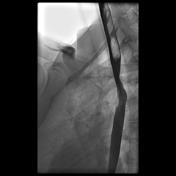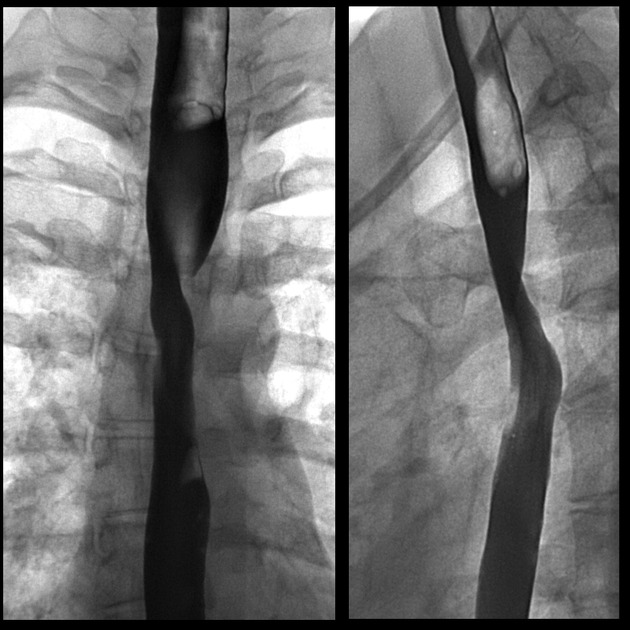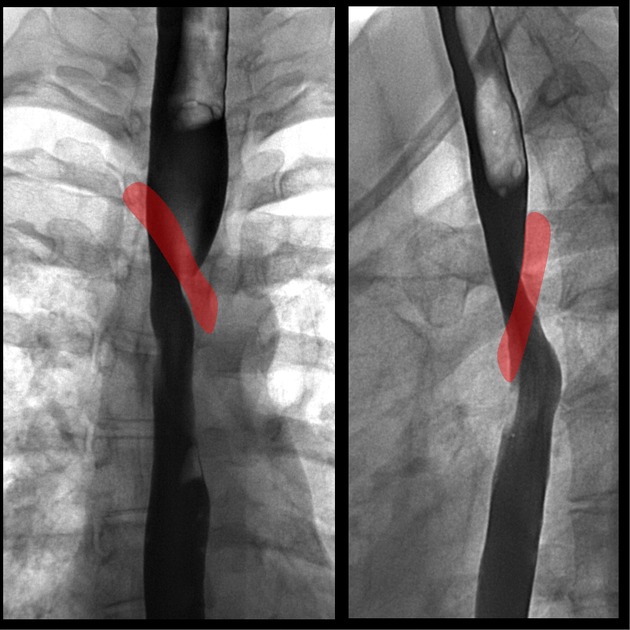Presentation
Mild longstanding dysphagia and throat discomfort after eating.
Patient Data




Barium swallow reveals fixed narrowing of the esophagus at the level of the aortic arch without mucosal abnormality. The narrowing runs oblique from inferior left to superior right and involves the posterior aspect of the esophagus. This is consistent with extrinsic compression by a retro-esophageal aberrant right subclavian artery resulting in dysphagia lusoria.

Barium swallow reveals fixed narrowing of the esophagus at the level of the aortic arch without mucosal abnormality. The narrowing runs oblique from inferior left to superior right and involves the posterior aspect of the esophagus. This is consistent with extrinsic compression by a retro-esophageal aberrant right subclavian artery (superimposed in red) resulting in dysphagia lusoria.




 Unable to process the form. Check for errors and try again.
Unable to process the form. Check for errors and try again.